Buzzing with Life: Our Pollinator Paradise
Pollinators play a crucial role in maintaining the health of our ecosystems and the productivity of our crops. In Fort Bend County, a diverse range of pollinators contribute to the vibrant landscapes we enjoy. This page will guide you through the fascinating world of Fort Bend County native pollinators, with a special emphasis on bees and wasps as they are the most effective pollinators in our area.
Bees and Wasps (Order Hymenoptera)
Bees and wasps are the cornerstone of the pollination process. They have co-evolved with plants to become highly efficient and purposeful pollinators. These industrious insects are responsible for pollinating the vast majority of our crops and wildflowers, making them essential for both ecosystem balance and agricultural productivity.
Bees: Fort Bend County is home to hundreds of native bee species. Here are just a few:
- Bumblebees (Bombus spp.): These large, fuzzy bees are excellent pollinators for many crops and wildflowers. They can fly at cooler temperatures, making them among the first bees seen in spring.
- Mason Bees (Osmia spp.): Known for their solitary nesting habits, mason bees are incredibly efficient pollinators, especially for fruit trees.
- Leafcutter Bees (Megachile spp.): These bees cut leaves to construct their nests and are vital pollinators of alfalfa and other crops.



Wasps: Often overlooked, wasps are vital to the pollination process.
- Paper Wasps (Polistes spp.): These social wasps visit flowers for nectar and pollinate them in the process.
- Mud Dauber Wasps (Sphecidae spp.): Insects that are known for building distinctive mud nests.
- Cicada Killer Wasps (Sphecius speciosus): these large wasps are impressive pollinators with a wingspan up to 2”.


True Flies (Order Diptera)
The ability of true flies to forage in diverse conditions, including cooler temperatures, and wet weather allows them to pollinate when other insects cannot. Here are a few types of true flies found in Fort Bend County.
- Hoverflies (Syrphidae family): These bee mimics are important for pollinating flowers.
- Bee Flies (Bombyliidae family): Fuzzy flies that resemble bees and actively pollinate.
Beetles (Order Coleopotera)
Beetles are ancient pollinators that have played a crucial role in plant reproduction for millions of years. While beetles may not be as efficient as bees or wasps, they play a vital role in pollination as they make up about 40% of all insect species worldwide. Only a few groups of beetles are effective pollinators. Important beetle pollinators in our area include:
- Flower Longhorn Beetles (Family Cerambycidae)
- Soldier beetles (Family Cantharidae)
- Scarab beetles (Family Scarabaeidae)
Butterflies and Moths (Order Lepidoptera)
While bees and wasps are the most effective pollinators in Fort Bend County, some native butterflies and moths contribute a minor role to the overall process.
- Monarch Butterfly (Danaus plexippus): Known for its impressive migration, the monarch relies on native milkweed plants to serve as host for its reproductive cycle.
- Gulf Fritillary (Agraulis vanillae): Commonly seen in gardens, particularly around passionflower vines.
- Sphinx moths (Family Sphingidae): These impressive flyers have long tongues, sometimes longer than their bodies, allowing them to access nectar from deep-throated flowers.



Texas-Native Plants In Seabourne’s Pollinator Habitat Bed
Creating a habitat for pollinators in your garden involves planting native species that provide food and shelter for bees, wasps, flies, beetles, and butterflies.
Here are the Texas-native plants beneficial to pollinators that can be seen in the Pollinator Habitat bed at Seabourne:
- Black-Eyed Susan (Rudbeckia hirta): Bold yellow flowers that attract bees.
- Spring Obedient plant (Physostegia intermedia): The bright purple flowers of this spring-blooming plant last a long time.
- Indian Blanket (Gaillardia pulchella): A short reseeding annual with orange, yellow and red blooms that is very easy to grow.
- American Basketflower (Centaurea Americana): A showy native wildflower with showy pink blooms, making it a favorite among various pollinators including bees and butterflies.
- Gregs’s Mistflower (Conoclinium greggii): This spreading groundcover has powder blue flowers that bloom from summer to fall and is a favorite of bees and butterflies.
- Blue Sage (Salvia azurea): An easy to grow perennial with blue flowers.



By planting these and other species of plants native to our area and then creating habitats using these plants, you can support the vital bee and wasp populations, as well as other pollinators in Fort Bend County. Remember, a diverse pollinator population leads to healthier ecosystems and more productive crops, benefiting both nature and agriculture in our area.
More Information about Pollinators and Pollinator Habitat
By planting native species and creating habitats that include food, shelter and water, you can support the diverse pollinator populations in Texas. For more detailed information on pollinators and how to help them, visit the linked resources below. Happy gardening!


